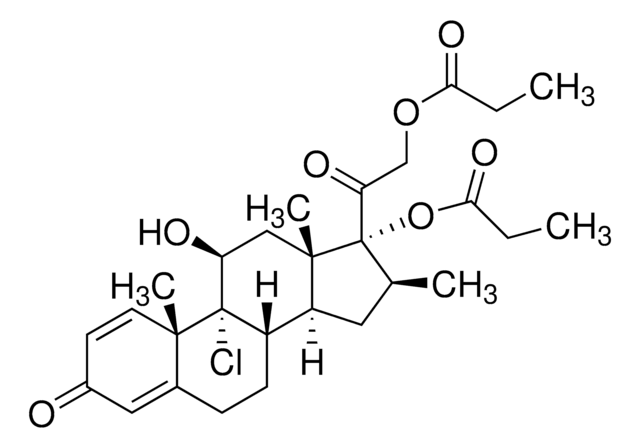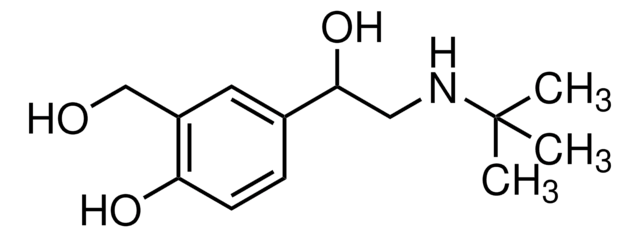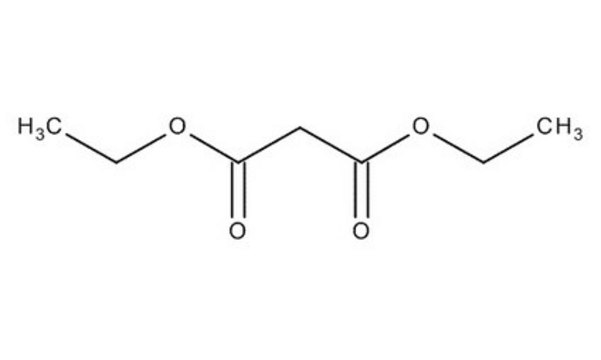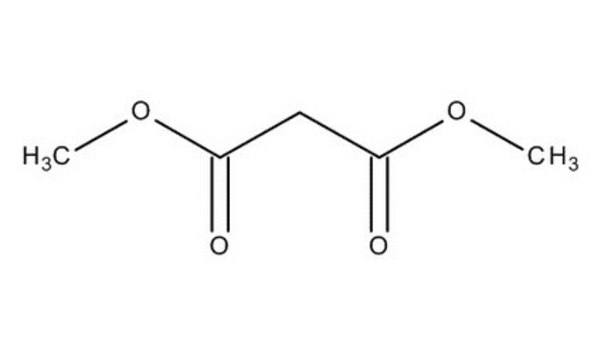445088
mono-Ethyl malonate
Synonym(s):
(Ethoxycarbonyl)acetic acid, 3-Ethoxy-3-oxopropanoic acid, Ethyl hydrogen malonate, Ethyl malonate, Monoethyl hydrogen malonate
About This Item
Recommended Products
form
liquid
impurities
<10% ethyl malonate, potassium salt
refractive index
n20/D 1.435 (lit.)
bp
106.5 °C/3 mmHg (lit.)
density
1.119 g/mL at 25 °C (lit.)
functional group
carboxylic acid
ester
SMILES string
CCOC(=O)CC(O)=O
InChI
1S/C5H8O4/c1-2-9-5(8)3-4(6)7/h2-3H2,1H3,(H,6,7)
InChI key
HGINADPHJQTSKN-UHFFFAOYSA-N
Related Categories
1 of 4
This Item | 8.00898 | 8.00899 | 63405 |
|---|---|---|---|
| form liquid | form liquid | form liquid | form - |
| density 1.119 g/mL at 25 °C (lit.) | density 1.055 g/cm3 at 20 °C | density 1.15 g/cm3 at 20 °C | density - |
| refractive index n20/D 1.435 (lit.) | refractive index - | refractive index - | refractive index - |
| bp 106.5 °C/3 mmHg (lit.) | bp 199 °C/1013 hPa | bp 181-183 °C/1013 hPa | bp - |
| impurities <10% ethyl malonate, potassium salt | impurities - | impurities - | impurities - |
| functional group carboxylic acid | functional group - | functional group - | functional group ester |
Application
- Preparation of tetramic acids via Dieckmann ring closure
- Organocatalytic decarboxylative Doebner-Knoevenagel reactions
- Conjugation to amino-modified oligonucleotides
- Acylation reactions (acylation agent)
- Indole glyoxylamides for potential Prion disease treatment
- Knoevenagel condensation with aldehydes
signalword
Warning
hcodes
Hazard Classifications
Eye Irrit. 2 - Skin Irrit. 2 - STOT SE 3
target_organs
Respiratory system
Storage Class
10 - Combustible liquids
wgk_germany
WGK 3
flash_point_f
235.4 °F - closed cup
flash_point_c
113 °C - closed cup
ppe
Eyeshields, Gloves, type ABEK (EN14387) respirator filter
Choose from one of the most recent versions:
Already Own This Product?
Find documentation for the products that you have recently purchased in the Document Library.
Our team of scientists has experience in all areas of research including Life Science, Material Science, Chemical Synthesis, Chromatography, Analytical and many others.
Contact Technical Service








